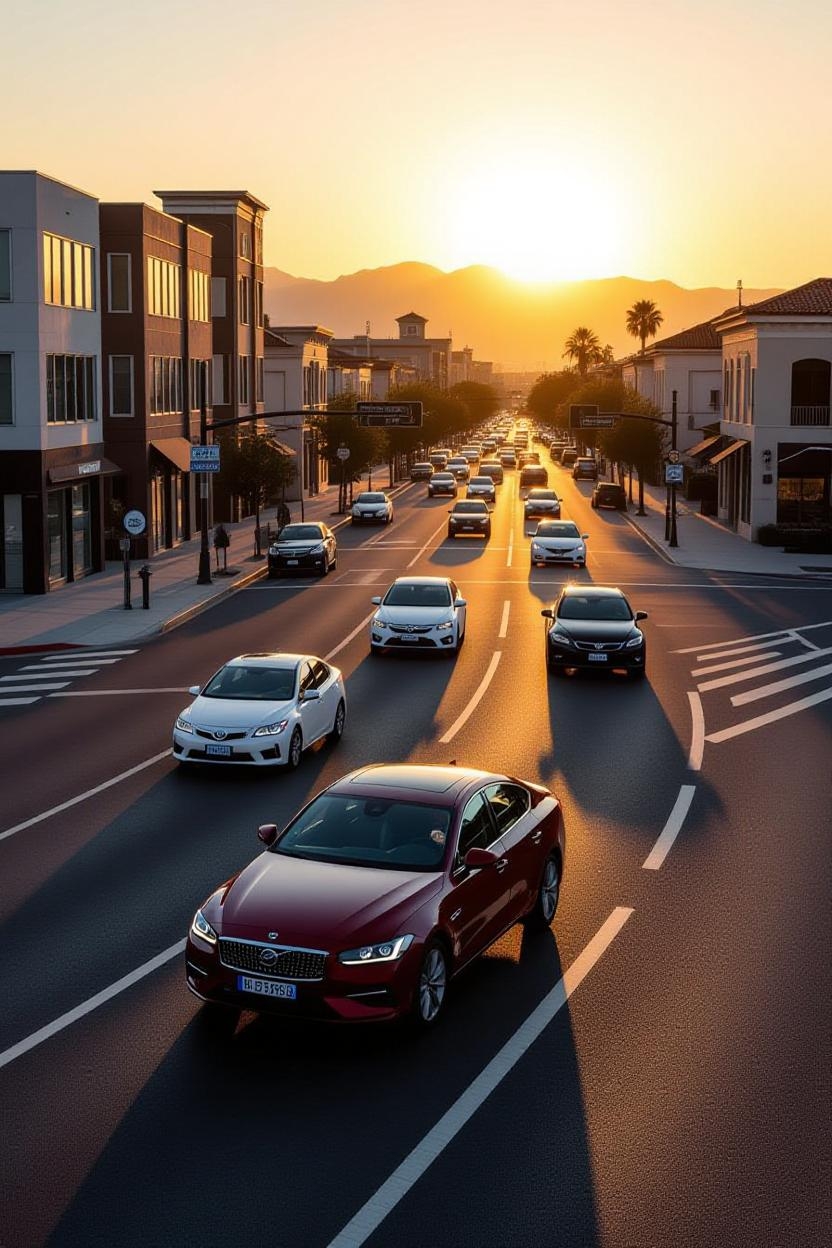What Color Are The Reflective Studs On A Motorway
Reflective studs, commonly known as cat’s eyes, are small, retroreflective markers embedded in motorways to guide drivers by reflecting vehicle headlights, enhancing visibility in low-light or adverse weather conditions.
Primarily used in the UK and some Commonwealth countries, these studs are color-coded to convey specific information about road layout and boundaries, ensuring safe navigation.
Each color serves a distinct purpose, rooted in road safety engineering and human visual perception, helping drivers instinctively understand lane discipline and road features, especially at night or in fog.
Below is a detailed explanation on what colors are the reflective studs and their roles on motorways.
How Many Colors Does Reflective Studs On A Motorway Have?
Reflective studs on motorways, as standardized in the UK, typically come in five distinct colors: white, red, amber, green, and green/yellow. Each serves a specific purpose to guide drivers and ensure road safety.
What Color Are The Reflective Studs On A Motorway?

The colors aren’t arbitrary; they’re rooted in human psychology, road safety engineering, and visibility science. Here’s the breakdown:
1. White Studs
White reflective studs on a motorway are used to mark the lanes or the center of the carriageway, they’re mostly found in a contraflow bus lane.
They serve as the primary guide for drivers, reflecting headlights to clearly outline the path of each lane, ensuring vehicles stay within their designated space.
The choice of white is deliberate—its high reflectivity maximizes visibility in low-light conditions, leveraging the human eye’s sensitivity to bright, neutral tones for quick recognition, even at high speeds or in poor weather.
Unlike other colors that signal boundaries or warnings, white studs are about maintaining consistent lane discipline, helping drivers navigate safely and avoid drifting.
2. Red Studs
Red reflective studs on a motorway are positioned along the left-hand edge of the carriageway, typically marking the boundary between the main road and the hard shoulder (in countries like the UK where driving is on the right side of the road).
Their purpose is to signal a strict “do not cross” instruction, indicating that drivers should not veer onto the hard shoulder except in emergencies, such as breakdowns or accidents.
The choice of red leverages its universal association with danger or prohibition, similar to traffic signs giving orders or traffic lights, making it instantly recognizable even in low-visibility conditions like darkness or heavy rain.
These studs are designed with retroreflective materials to brightly reflect headlights, ensuring clear visibility and reinforcing road discipline to prevent unsafe maneuvers.
3. Amber Studs
Amber reflective studs on a motorway, are strategically placed to mark the right-hand edge of the carriageway, typically adjacent to the central reservation (median) that separates opposing traffic flows.
Their warm, yellowish-orange hue is chosen for its high visibility in low-light conditions and its psychological association with caution, distinct from the prohibitive red studs on the left.
Similar to Diamond shaped traffic signs and who should obey them, Amber studs also serve as a critical warning to drivers, signaling the boundary between their direction of travel and oncoming traffic, helping to prevent dangerous crossings into the opposite carriageway.
They’re especially vital on undivided motorways or during poor visibility, guiding drivers to stay within their designated lanes.
The amber color leverages the human eye’s sensitivity to warmer tones in peripheral vision, ensuring drivers notice this boundary even at high speeds or in adverse conditions..
4. Green Studs
Green reflective studs on a motorway mark the edges of slip roads, lay-bys, or entry/exit points.
They guide drivers during transitions, such as merging onto or exiting the motorway, signaling safe points for lane changes or deceleration.
Also Read On:
- Which Color Follows The Green Signal At A Puffin Crossing.
- Green Flashing Beacon Vehicle Light| Who Can Use Them.
Green is chosen for its association with “go” or safety, contrasting with red or amber studs that indicate boundaries to avoid.
Its high visibility in low-light conditions helps drivers navigate junctions clearly, reducing confusion and enhancing safety.
5. Green/Yellow Studs
Green/yellow reflective studs on a motorway are used temporarily during roadworks or construction to indicate altered road layouts or potential hazards.
The combination of green and yellow leverages green’s association with safe transitions (like entry/exit points) and yellow’s high-visibility caution signal, making these studs stand out against the permanent white, red, amber, and green studs.
They guide drivers through temporary changes, such as lane shifts or narrowed sections, ensuring safe navigation in Urban Clearway zones, .
Their distinct dual-tone design helps prevent confusion with standard studs, alerting drivers to pay extra attention in these areas.
What Are The Reflective Studs Between A Motorway And A Slip Road?
The reflective studs between a motorway and a slip road in the UK are green.
These studs mark the boundary where the slip road (used for entering or exiting the motorway) meets or diverges from the main carriageway.
The green color signals a safe transition point, guiding drivers as they merge onto or exit the motorway.
It’s chosen for its association with “go” or safe passage, helping to reduce confusion at these high-risk junctions where lane changes occur, especially in low-visibility conditions like night or fog.
Always follow these studs carefully to stay on the correct path when entering or leaving the motorway.
Frequently Asked Questions About Reflective Studs on Motorways

1. What are reflective studs on a motorway?
- Reflective studs, also called cat’s eyes, are retroreflective markers embedded in the road to reflect vehicle headlights, guiding drivers in low-light or poor weather conditions. They are color-coded to indicate specific road features or boundaries.
2. What color are the reflective studs between a motorway and a slip road?
- The studs between a motorway and a slip road are green. They mark the entry or exit points of slip roads, helping drivers navigate safely when merging onto or exiting the motorway.
3. What do green/yellow studs mean on a motorway?
- Green/yellow studs are used temporarily during roadworks or construction. They indicate altered road layouts or hazards, combining green’s “safe transition” cue with yellow’s high-visibility caution signal to guide drivers through temporary changes.
4. Why are different colors used for reflective studs?
- Colors are chosen based on visibility, human psychology, and road safety principles. For example, white is highly reflective for lane guidance, red signals “do not cross” for danger, amber warns of the central reservation, and green indicates safe entry/exit points. Green/yellow stands out for temporary changes.
5. Are reflective stud colors the same in every country?
- No, while the UK’s system (white, red, amber, green, green/yellow) is widely adopted, other countries may use variations. For example, some use blue studs for emergency vehicle access or different colors for specific road types. Always check local road regulations.
6. How do green/yellow studs differ from permanent studs?
- Green/yellow studs are temporary, used only during roadworks to highlight changes like lane shifts or narrowed sections. Their dual-tone design ensures they stand out against permanent studs (white, red, amber, green), alerting drivers to modified conditions.
7. Why are green studs used for slip roads?
- Green reflective studs is used for slip roads because it’s associated with “go” or safe transitions, guiding drivers smoothly when merging or exiting. It contrasts with red (prohibited areas) and amber (central reservation), reducing confusion at junctions.
8. Can I drive over reflective studs?
- It depends on the color. White and green studs can generally be crossed when changing lanes or entering/exiting slip roads, but red (hard shoulder) and amber (central reservation) studs should not be crossed except in emergencies or when directed.


